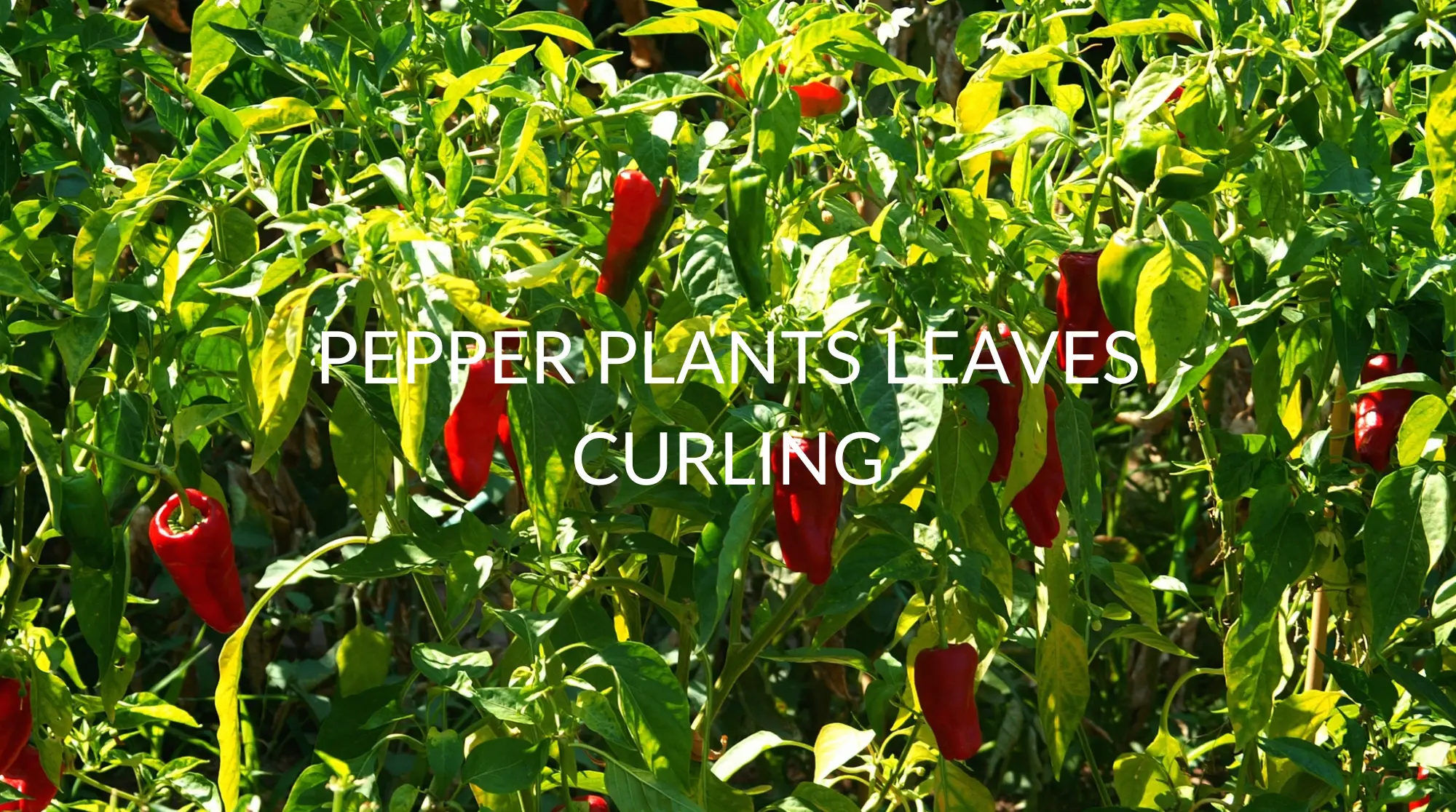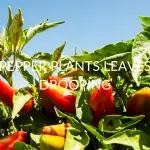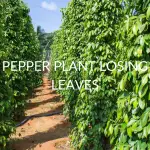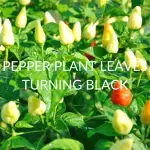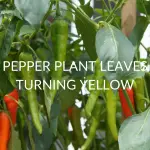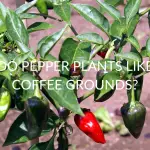One of the number one signs that an issue might be cropping up with your pepper plants is a curling of the leaves. There are several reasons that your pepper plant might end up with its leaves curling.
Everything from the health of your soil to the amount of light your plant is getting can affect your plant. Inspecting the leaves can give you an idea of what is troubling them. Whether it’s a lack of nutrients or a need for better air circulation, it’s important to treat the cause of the leaves curling.
In this article, you’ll be able to find several issues that might cause your pepper plant to have curling leaves, as well as the solutions to help them be as healthy as they can be.
Why Are My Pepper Plant Leaves Curling?
Many factors could be causing your pepper plant’s leaves to curl. Below, we’ll talk about the common causes and the solutions you can enact to help your plants. It is important to examine the leaves to get the best idea of what is going on since that will help you decide on the best course of action to take.
Overwatering
This is a fairly easy mistake to make. Your pepper plants need to be watered enough to keep them growing strong, but it is easy to overwater. You may notice that the leaves are yellowed as well as curling.
If the soil is too moist, it can greatly affect the health of your pepper plant. You want to ensure you’re not overwatering and causing damage to the plant and its root system.
To keep your plant from being overwatered, it is important to make sure you’re only watering your pepper plant when the soil is dry. You also want to ensure the pot you’ve got it planted in is properly draining and that no liquid is allowed to collect at the bottom.
You may even want to invest in a soil water meter to make sure that the soil is adequately dry before you water your plant.
Plant Edema
When looking at the leaves of your pepper plant, if you notice a whitish, textured, and crystallized substance on the underside of your leaves, then plant edema is likely to blame for the curling. This is a sign that your plant might not be getting enough airflow or humidity.
Some easy solutions are to place a fan near the plant so that the air can circulate and to use a spray bottle to spritz the plant to add moisture to the air around it. This should be done once or twice a week at most to help keep the humidity in the air at the right level.
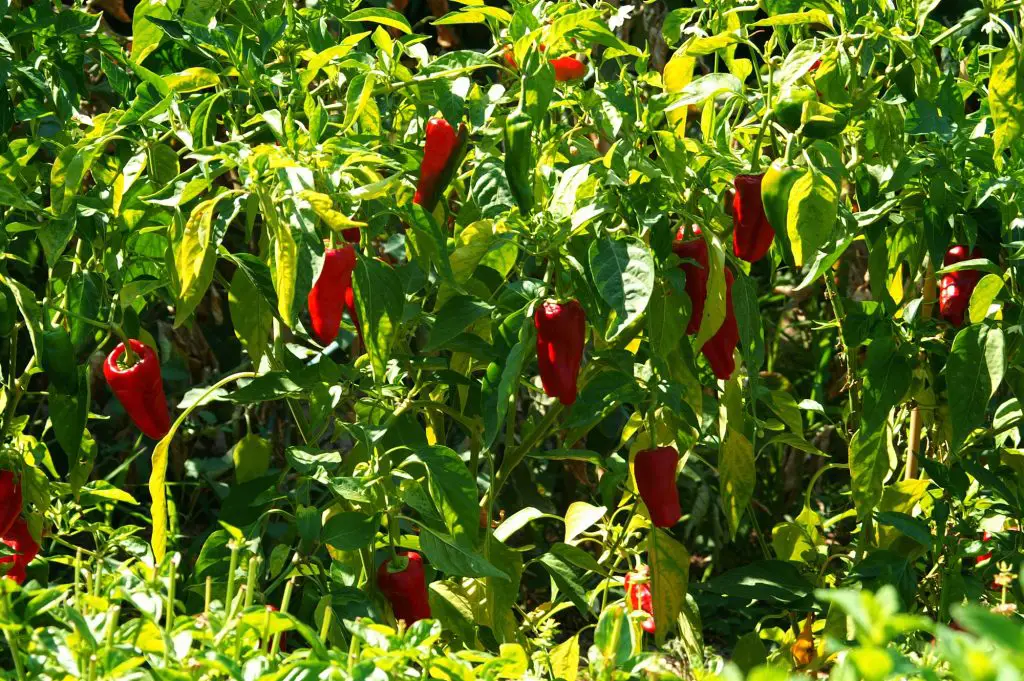
Lighting
Another issue that might affect your plants is either too little or too much light. Pepper plants like to have a lot of daylight, and if they aren’t given a sufficient amount, they may suffer, but too much is also a bad thing, and you have to be careful not to let your plants get scorched.
If there is too much light, especially from an artificial source such as indoor grow lights, you’ll see your pepper plant leaves begin to curl up and even get singed on the edges.
To prevent this kind of damage to your plant, it is important to make sure you’re giving the plant enough space between itself and the light source. Make sure any artificial lights are at least twelve to eighteen inches from the tops of the plants.
It may also be beneficial to put your grow lights on a timer to ensure they aren’t getting more than 12 to 16 hours of light a day.
Nutrient Deficiency
Noticing a “bubbled” curling on your pepper plant leaves may indicate that your plant is suffering from nutrient deficiency. This is particularly troublesome for pepper plants because nutrients like calcium and magnesium are important to the growth and overall health of the plant.
If your plant is lacking calcium, this can cause browning of the leaves, bubbly curling, and wilting. Calcium, in particular, is important to the strength of your pepper plant’s cell walls and is needed to make sure the structure is strong.
There are a few ways to solve this problem, including adding calcium in with sprays that are formulated to help, since most of these are developed with magnesium as well as ensuring that the plant doesn’t end up suffering from a lack of the other nutrient.
Another method is to use a fertilizer with the correct calcium and magnesium built right into the formula.
Potting Problems
Pepper plants have a very hearty rooting system, so potted plants can suffer from becoming root bound.
This is caused by keeping a plant in a container that is too small and doesn’t allow the roots to stretch out and have enough room to grow. Root-bound plants are especially common with pepper plants since they grow so rapidly.
This problem is a relatively easy one to fix. All you’ll need to do is replant in a larger pot, one that can accommodate the sprawling roots and ensure there is plenty of room for the pepper plant to grow and prosper. Just be careful not to damage the roots in the replanting process.
Pests
Every gardener is familiar with this particular malady since pests have been the bane of the home gardener since plant propagation began.
You might notice that only one or two leaves are curling, and if that’s the case, then it is very likely that you’re experiencing problems with pests rather than one of the other causes of leaves curling.
It can be difficult to get rid of pests once they’ve arrived on your plant, so it is best to try preventative methods before letting it get to a point where you need to take more drastic measures.
To get rid of any insects that have infested your pepper plants, begin by spraying them with water and gently wiping the leaves clean. You can also apply neem oil to the leaves to help prevent aphids and other insects from feasting on your plant. To prevent them from returning, it is a good idea to add some neem oil to your fertilizer.
Temperature
Lower temperatures are very bad for plants and can cause them to wilt and die before their time. If the temperature gets too low or too high, it can damage the plant, and it is difficult to recover from that, so it is best to try to prevent it ahead of time.
If the temperature where your pepper plant is growing lowers below around 65 degrees F, then it is possible that your plant will have problems growing properly, and the leaves will begin to curl.
Ensure you are keeping an eye on the temperature, and if necessary, you could use a heat light to warm the area where the plant is kept.
Disease
If you start to notice brown, circular spots on your pepper plant, the plant may be suffering from a bacterial infection. This is a common disease that affects these plants called pepper leaf spot.
Often found in humid, rainy climates, this disease appears as dark, brown spots on the leaves of your pepper plant, often accompanied by curling leaves. Since it is a bacterial infection, it can be spread by touch and by pests. Be careful to prevent cross contamination if this is the case.
To get rid of the infestation, you’ll want to remove any infected parts and prune infected leaves. Once the leaves are trimmed away, you want to apply a copper-based fungal spray to help prevent further growth of bacteria. Though it’s antifungal, it can help reduce the spread of infection.
Other Causes Of Leaf Curling In Pepper Plants
While the causes listed above are the main culprits of pepper leaf curling, there are a few other things to look out for and be aware of if none of those solutions seem to be helping your plants.
Poor Pollination
For the most part, pepper plants are resilient and able to pollinate on their own, but there may be times when pollination is an issue. Especially affecting indoor pepper plants, poor pollination can sometimes cause leaf curling.
You can try to hand pollinate the peppers, or give the plants a little shake when the flowers have begun to bloom to encourage them to pollinate.
Over Pruning
It’s important to make sure that you are not pruning your pepper plants so much that you are stressing them out. If the plant is over-pruned, it’s possible that the leaves will curl, and the plant will start to wilt.
To avoid this, rather than pruning your pepper plant all at once, it’s best to do it over a few days to ensure that the plant doesn’t get shocked by the removal of too much at once.
Transplant Shock
Because pepper plants are pretty sturdy, transplanting them is usually not a big issue. However, smaller pepper plants and seedlings may have trouble adjusting to changes, especially when transplanting from an indoor pot to the outside.
To avoid transplant shock, try to replant your pepper plants on a relatively overcast or cool day, and be careful not to damage the root system.
As long as you make sure to water them appropriately, your plants will probably bounce back from any shock during the transplanting process.
Viral Disease
There are a few different viral diseases that can affect a pepper plant and cause curling.
Curly top disease can be recognized by the lightening or yellowing of the leaves accompanied by the curling of the edges and is especially common in areas of high humidity such as temperate marine or tropical climates.
Mosaic virus can be identified by mottling on the leaves, a bumpy surface, and stunted growth of the plant. The disease can be in either the soil or the seeds and is usually spread by pests, though it can be spread by other infected plants as well.
Unfortunately, there are no adequate treatments for either of these viral diseases, so the best solution to prevent spreading is to remove the infected plant entirely.
How Do You Treat Pepper Leaves Curling?
Though there are several causes for leaf curling in pepper plants, there are a few solutions that should be able to treat the problem overall and also ensure your plants are as healthy as they can be, allowing for the best growth and a bountiful harvest.
Water
The number one method to ensure your pepper plants are growing to the best of their abilities is to ensure you’re watering them properly and making sure they get all the moisture they need.
It’s a smart investment to get a water meter so that you can keep tabs on the moisture levels of your plants soil.
Irrigation
Make sure that your plant is growing in a pot that’s large enough for it and that has proper irrigation to allow any water to run off, rather than sitting in the bottom of the pot and causing bigger problems down the line. Irrigation is very important for pepper plants.
Sunlight
While grow lights are great for apartment growing, pepper plants do especially well when they can get natural light. They require a lot of light, so if you can, place your pepper plant where they’ll get sunlight throughout the entire day.
Fertilizer
Because calcium and magnesium are so important to a pepper plant’s diet, the right fertilizer is key in growing a healthy plant. Make sure to look for one that has these nutrients available, and if necessary, add a cal-mag spray to boost your plant’s nutrient intake.
Space
Pepper plants like to have a lot of room to stretch out, so make sure that when you plant, you’re using a pot that will allow its roots all the space necessary to grow.
As long as you follow these guidelines, your pepper plant is likely to bounce back from almost anything that may have caused its leaves to curl since they are incredibly resilient plants.
FAQ
How Do You Know if You Are Overwatering Pepper Plants?
If you notice your leaves are looking wilted and droopy, you may be overwatering your pepper plant.
The best way to know if your plant needs watered is just to check the moisture of the soil. You can do this by pushing your finger into the soil and feeling about an inch down into it. If it feels moist, then you don’t need to water your plant just yet.
Why Are My Pepper Plant Leaves Wrinkled?
If you notice your pepper plant has wrinkled leaves, the number one culprit to blame is likely pests. There could be other factors such as environmental issues that cause them to wrinkle as well, but pests are very common.
To get rid of them, you should try spraying the plant leaves with neem oil to prevent further infestation.
How Do You Pollinate Pepper Plants by Hand?
To pollinate your pepper plants, you can take a small paintbrush, toothbrush, or cotton swab and gently collect the pollen from flower to flower. You can also try to gently shake the plant to get the pollen to shake loose and pollinate the flowers that way. Watch this video for an idea of how to properly pollinate your pepper plants by hand.
Summary
Many things can cause your pepper plants to show signs of damage, such as curling or wrinkled leaves, but the good news is that there are also a lot of ways to fix it. Pepper plants are tough, and with a little help, they can rebound from almost anything. Whether the problem is a lack of room to grow, overwatering, or environmental factors, there are lots of things you can do to ensure your pepper plants grow to be the best that they can be!

